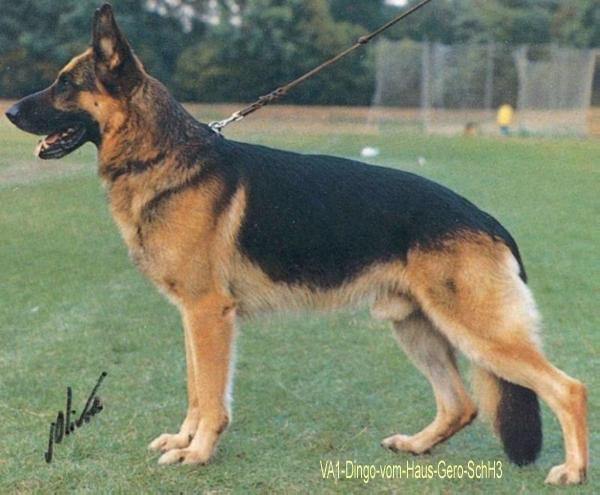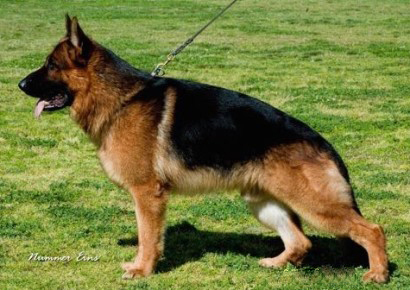German Shepherd Dogs Then and Now
Gordon Garrett, B.A., CKC Judge (All-Breeds), GSD Authority

I'm told that most German Shepherds sold as pets or home protectors without having to be structurally perfect are what the market demands.
I have always looked at the GSD as more than that, having got my basic training in the shadow of Lloyd Brackett who was always analyzing even his own dogs and writing articles in support of the American brand but invariably he was breeding to German dogs. Brackett selected from the best of the progeny to carry on his breeding and while there were excellent American bred dogs available, he wanted his own brand and was looking for characteristics that would stamp the dogs he bred as coming from his Long Worth kennel.
Lloyd Brackett inbred to get what he wanted and from those dogs he selected stock to go on with. After he had passed the kennel over to Virginia, I came on the scene with a certain knowledge of genetics myself but the experience I had at Long-Worth gave me the knowledge to combine what I knew and proceed on my own German Shepherd Dog breeding plan.
There were all kinds of obstacles and frankly my finances limited what shows I could get to but my efforts were not dependant on show wins. I came up with some good animals and some good allies to work with. Both are important in any breeding plan.

VA1-Dingo-vom-Haus-Gero-SchH3
Some x-rays looked terrible and we just gave those dogs away. One dog with suspicious hips, 12 years later was still jumping fences. Another giveaway grew up and was winning Groups. We kept guessing and confirmed what we had at 2 years.
Probably the best dog I ever bred was a sable that I had sold at six weeks but we used him at stud a few times. He went Best Of Breed at 14 months under Ernest Loeb at a specialty. The owner would not allow us to x-ray him at two years because he didn’t want us to put him under anesthetic, so he never got used again but his offspring x-rayed normal.
His sister became a cog in American breeding when combined with a combination of more German sable breeding. A daughter of that breeding was bred to a son of Bernd von Kalungruennen and a daughter of that bred to Lance of Fran Jo and a daughter of that breeding was bred back to Lance - that produced Zeuz and Zito of Fran Jo.
Their influence is well known and I always felt the benefit was partly due to the sable dogs in the background. Look at them; Ero von Awallenberg, Vali von Sieghaus Cito von Hedrmanshleause, Harry von Bolshied, Haus Chloe's Fly Kink, Haus Chloe's Bisket, Mercurio of Longworth, Narobi's Grit. These were only the sables in near past. After Lance they were all black and tans.
It sort of mirrors what was done back in the 50's when Dr. Funk brought in Claudius von Hain, the working/herding dog to replenish German breeding. That began a refreshing process with all the sable working dogs brought into the German show lines.

Today we have German dogs with roached backs--toplines like brown bears and backs that flow up and down as they trot. Their influence has spread to the rest of Europe and the Kennel Club in Britain is in turmoil as they attempt to determine how the breed should be judged.
In North America they have beautiful backs on the dogs but they lift their fronts and have too much rear angulation; more than the dogs can extend behind them. Jimmy Moses said in an interview, "they run on their pasterns and hocks."
I know what the problem is.
The German breed needs the introduction of a few sable working dogs that have the proper balance and timing between the diagonal front and rear legs. Today breeders are past most of the hip and temperament worry, and breeding stock has been certified by someone. But when we get down to the nitty-gritty, people like me see dragging feet on dogs that are too steep in the croup and have too much rear angulation. Don’t worry, it is missed by most specialty judges because they have lived with the problem for years.
I showed a picture on facebook of a specials bitch at a specialty show that was running on her pasterns. People were surprised but if one looked closer they would also see that she was dragging her hind toes.
Some good breeding partners can be found amongst European working dogs, often dark sable in colour. For some reason most of these do not have the roach so common in German show dogs, but they might be tough.